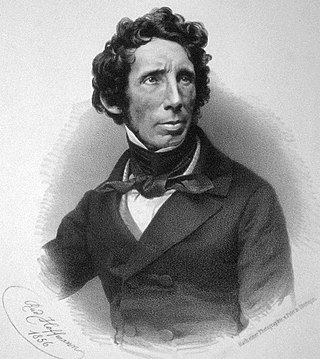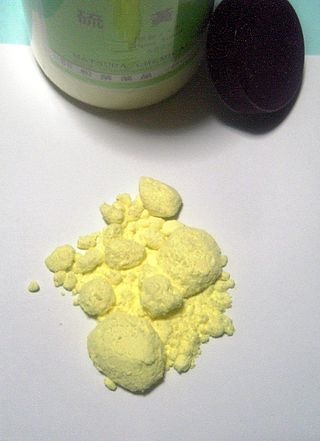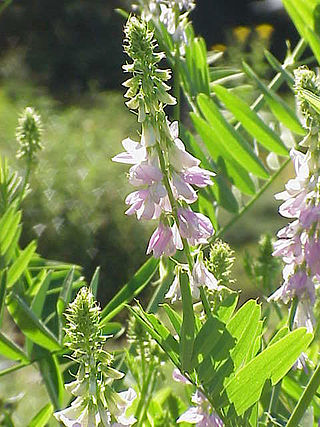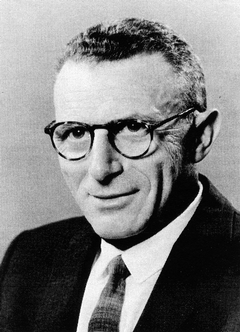Related Research Articles

A chemist is a scientist trained in the study of chemistry. Chemists study the composition of matter and its properties. Chemists carefully describe the properties they study in terms of quantities, with detail on the level of molecules and their component atoms. Chemists carefully measure substance proportions, chemical reaction rates, and other chemical properties. In Commonwealth English, pharmacists are often called chemists.

Friedrich Wöhler FRS(For) HonFRSE was a German chemist known for his work in both organic and inorganic chemistry, being the first to isolate the chemical elements beryllium and yttrium in pure metallic form. He was the first to prepare several inorganic compounds, including silane and silicon nitride.

Organic chemistry is a subdiscipline within chemistry involving the scientific study of the structure, properties, and reactions of organic compounds and organic materials, i.e., matter in its various forms that contain carbon atoms. Study of structure determines their structural formula. Study of properties includes physical and chemical properties, and evaluation of chemical reactivity to understand their behavior. The study of organic reactions includes the chemical synthesis of natural products, drugs, and polymers, and study of individual organic molecules in the laboratory and via theoretical study.
In chemistry, chemical synthesis is the artificial execution of chemical reactions to obtain one or several products. This occurs by physical and chemical manipulations usually involving one or more reactions. In modern laboratory uses, the process is reproducible and reliable.

In chemistry, a reagent or analytical reagent is a substance or compound added to a system to cause a chemical reaction, or test if one occurs. The terms reactant and reagent are often used interchangeably, but reactant specifies a substance consumed in the course of a chemical reaction. Solvents, though involved in the reaction mechanism, are usually not called reactants. Similarly, catalysts are not consumed by the reaction, so they are not reactants. In biochemistry, especially in connection with enzyme-catalyzed reactions, the reactants are commonly called substrates.
Drugs used in diabetes treat diabetes mellitus by altering the glucose level in the blood. With the exception of insulin, most GLP receptor agonists, and pramlintide, all are administered orally and are thus also called oral hypoglycemic agents or oral antihyperglycemic agents. There are different classes of anti-diabetic drugs, and their selection depends on the nature of diabetes, age, and situation of the person, as well as other factors.

Galega officinalis, commonly known as galega or goat's-rue, is an herbaceous plant in the subfamily Faboideae of the legume family Fabaceae. It is native to parts of northern Africa, western Asia and Europe, but is widely cultivated and naturalised elsewhere. The plant has been extensively cultivated as a forage crop, an ornamental, a bee plant, and as green manure.

Medicinal or pharmaceutical chemistry is a scientific discipline at the intersection of chemistry and pharmacy involved with designing and developing pharmaceutical drugs. Medicinal chemistry involves the identification, synthesis and development of new chemical entities suitable for therapeutic use. It also includes the study of existing drugs, their biological properties, and their quantitative structure-activity relationships (QSAR).
Barbituric acid or malonylurea or 6-hydroxyuracil is an organic compound based on a pyrimidine heterocyclic skeleton. It is an odorless powder soluble in water. Barbituric acid is the parent compound of barbiturate drugs, although barbituric acid itself is not pharmacologically active. The compound was first synthesised by Adolf von Baeyer.
Ernest Henry Volwiler was an American chemist. He spent his career at Abbott Laboratories working his way from staff chemist to CEO. He was a pioneer in the field of anesthetic pharmacology, assisting in the development of two breakthrough drugs, Nembutal and Pentothal. Volwiler also helped Abbott Laboratories to achieve commercial success for its pharmaceutical products including the commercialization of penicillin and sulfa drugs during World War II.
Petr Zuman was a Czech chemist.

Biguanide is the organic compound with the formula HN(C(NH)NH2)2. It is a colorless solid that dissolves in water to give highly basic solution. These solutions slowly hydrolyse to ammonia and urea.

Max Tishler (October 30, 1906 – March 18, 1989) was president of Merck Sharp and Dohme Research Laboratories where he led the research teams that synthesized ascorbic acid, riboflavin, cortisone, pyridoxine, pantothenic acid, nicotinamide, methionine, threonine, and tryptophan. He also developed the fermentation processes for actinomycin, vitamin B12, streptomycin, and penicillin. Tishler invented sulfaquinoxaline for the treatment for coccidiosis.

Phenformin is an antidiabetic drug from the biguanide class. It was marketed as DBI by Ciba-Geigy, but was withdrawn from most markets in the late 1970s due to a high risk of lactic acidosis, which was fatal in 50% of cases.

Buformin (1-butylbiguanide) is an oral antidiabetic drug of the biguanide class, chemically related to metformin and phenformin. Buformin was marketed by German pharmaceutical company Grünenthal as Silubin.

Herman Francis Mark was an Austrian-American chemist regarded for his contributions to the development of polymer science. Mark's x-ray diffraction work on the molecular structure of fibers provided important evidence for the macromolecular theory of polymer structure. Together with Houwink he formulated an equation, now called the Mark–Houwink or Mark–Houwink–Sakurada equation, describing the dependence of the intrinsic viscosity of a polymer on its relative molecular mass. He was a long-time faculty at Polytechnic Institute of Brooklyn. In 1946, he established the Journal of Polymer Science.
Martha Greenblatt is a chemist, researcher, and faculty member at Rutgers University, New Brunswick, New Jersey. As of January 2008 she was the only female chair of a science department in the School of Arts and Science. Greenblatt took the position of chair of the chemistry department at Rutgers while pursuing research interests in solid state inorganic chemistry. She was also the recipient of the 2003 American Chemical Society’s Garvan-Olin Medal – a national award given yearly to an outstanding woman chemist. In 2004, she became Board of Governors Professor of Chemistry at Rutgers.

Baron Jöns Jacob Berzelius was a Swedish chemist. Berzelius is considered, along with Robert Boyle, John Dalton, and Antoine Lavoisier, to be one of the founders of modern chemistry. Berzelius became a member of the Royal Swedish Academy of Sciences in 1808 and served from 1818 as its principal functionary. He is known in Sweden as the "Father of Swedish Chemistry". Berzelius Day is celebrated on 20 August in honour of him.
Govindasamy Mugesh is an Indian inorganic and physical chemist, a professor and the head of the Mugesh Laboratory attached to the department of Inorganic and Physical Chemistry at the Indian Institute of Science. He is known for his studies on mechanism of thyroid hormone action and is an elected fellow of the Indian Academy of Sciences, Indian National Science Academy, Royal Society of Chemistry and the National Academy of Sciences, India. The Council of Scientific and Industrial Research, the apex agency of the Government of India for scientific research, awarded him the Shanti Swarup Bhatnagar Prize for Science and Technology, one of the highest Indian science awards, in 2012, for his contributions to chemical sciences. In 2019, he was awarded the Infosys Prize in Physical Sciences for his seminal work in the chemical synthesis of small molecules and nanomaterials for biomedical applications.

Dumbala Srinivasa Reddy is currently Director CSIR-IICT Indian Institute of Chemical Technology Hyderabad India, he has additional charge of CSIR-IIIM CSIR-Institute of Integrative Medicine at Jammu and CSIR-CDRI CSIR-Drug Research Institute at Lucknow, India.
References
- ↑ UPI (July 26, 1977). "Diabetic drug linked to deaths banned". Boca Raton News. https://news.google.com/newspapers?nid=1291&dat=19770726&id=mt4PAAAAIBAJ&sjid=xIwDAAAAIBAJ&pg=4457,3796314
- ↑ "Medicine: Poison-Ivy Cure". 19 October 1942. Archived from the original on September 15, 2008. Retrieved 28 December 2010.
{{cite journal}}: Cite journal requires|journal=(help) - ↑ US Government Printing Office, Washington, DC, 1952 https://apps.dtic.mil/sti/pdfs/ADA422425.pdf
- ↑ Science, 114, 73 (1951).
- ↑ Kahn, EJ; Brendan Gill; Gordon Cotler (2 September 1950). "Abundant, Buoyant, and Toxic". New Yorker: 42.
- ↑ Comments by Dr. Louis Freedman published in "The Chemist," November 1968, Vol XLV, No. 11, p. 350
- ↑ "The Chemist," November 1968, Vol XLV, No. 11, p. 347
- ↑ http://fultonhistory.com/Newspaper%2018/Hastings%20NY%20Hastings%20on%20the%20Hudson%20News/Hastings%20NY%20Hastings%20on%20the%20Hudson%20News%201961/Hastings%20NY%20Hastings%20on%20the%20Hudson%20News%201961%20-%200756.pdf [ dead link ]